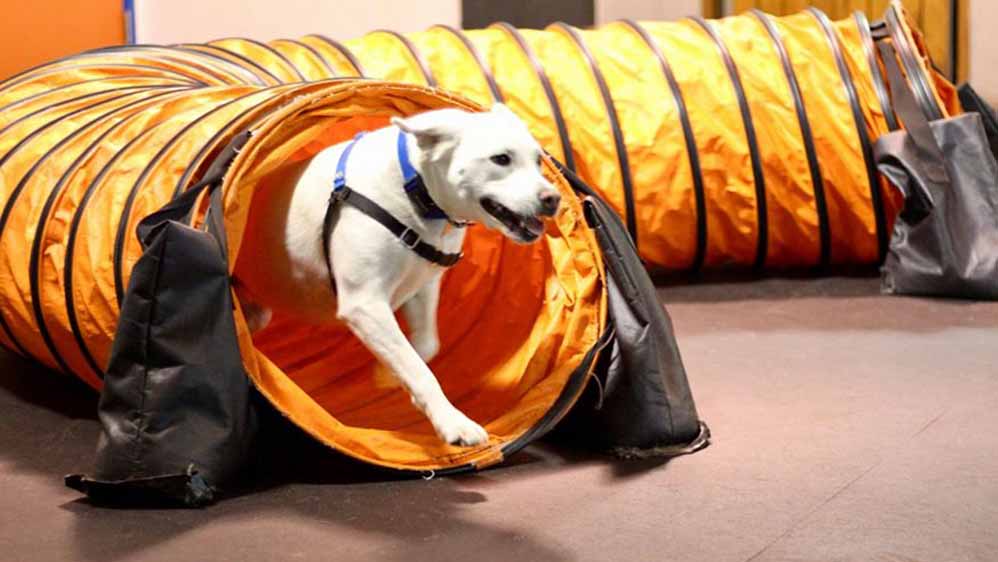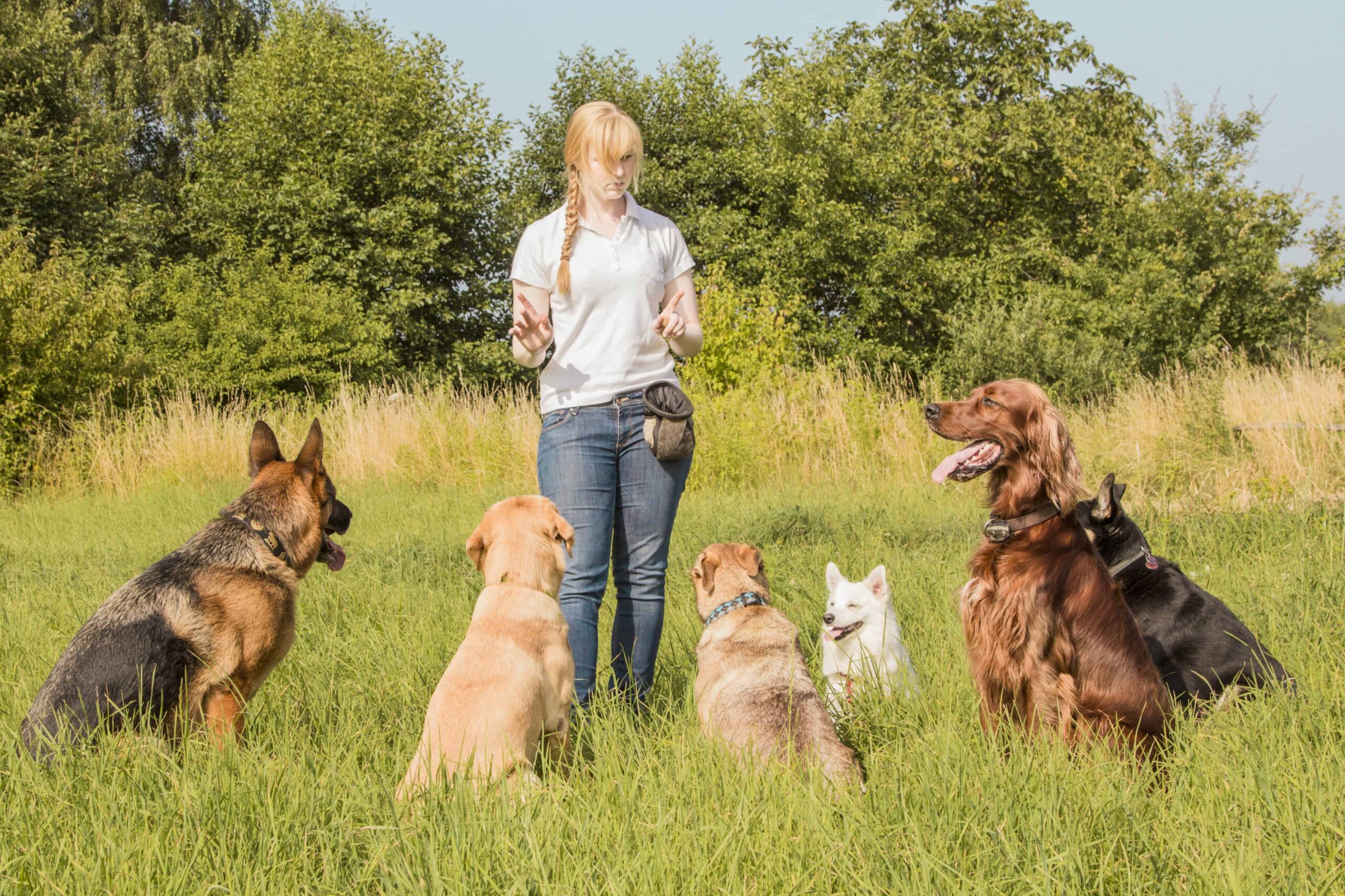Essential Tips for Successful Dog Training: A Guide for Pet Owners
Effective dog training is a diverse process that needs a critical strategy customized to both the pet dog's personality and the proprietor's purposes. Trick parts such as developing constant commands, utilizing positive reinforcement, and facilitating early socializing play critical duties in cultivating a well-adjusted canine buddy. Nevertheless, lots of animal owners encounter challenges that can prevent progression, causing irritation and unpredictability. Recognizing just how to navigate these barriers can substantially improve the training experience, ultimately changing the connection in between proprietor and dog. What are the crucial approaches that can be utilized to make certain success in this venture?
Recognizing Dog Habits
Recognizing dog behavior is vital for reliable training and cultivating an unified partnership in between canines and their owners. dog training. Dogs communicate mainly with body language, vocalizations, and actions, making it vital for proprietors to interpret these signals accurately.

Socialization plays a significant function in canine behavior; direct exposure to numerous settings, people, and other pets can dramatically affect a canine's temperament. Furthermore, variables such as breed qualities and specific personality ought to guide training approaches, as some breeds may have details behavior qualities that necessitate customized techniques. By comprehending these elements, proprietors can create a helpful environment that motivates favorable habits, bring about successful training end results and a deeper bond with their family pets.
Establishing Constant Commands
Reliable communication with your pet begins with developing regular commands. This foundational aspect of training is essential for cultivating understanding in between you and your animal. Uniformity in the commands you use guarantees that your pet can reliably connect certain words or expressions with the desired habits.
When picking commands, choose clear, unique words that are simple to separate and claim from each other. Avoid utilizing similar-sounding commands that might puzzle your dog. For example, using "sit" and "remain" is ideal, but "sit" and "hit" might cause misconceptions.
In addition, maintain the same tone and volume for each command. Canines are sensitive to vocal hints, so varying your tone can produce complication.
It is equally important to make certain that all relative get on the exact same page regarding the commands made use of. A united front in command usage will certainly stop blended signals and enhance the discovering process.
Favorable Reinforcement Techniques
The power of favorable reinforcement in dog training hinges on its ability to urge preferred behaviors with rewards and appreciation. This technique is based in the principle that actions followed by desirable results are more probable to be duplicated. By incorporating favorable reinforcement right into your training regimen, you can successfully form your canine's actions in a constructive way.
To implement favorable support, it's necessary to identify what inspires your pet, whether it next page be treats, toys, or spoken praise. When your canine executes a desired activity, such as resting on command, immediately award them with a reward or affection. This association in between the command and the favorable outcome enhances their understanding.
It's critical to timing the benefits properly; supplying the reinforcement within seconds of the preferred habits aids your dog make the link (dog training). In addition, uniformity is key-- guarantee that all relative make use of the same commands and benefit systems to prevent complication

Progressively, you can reduce the frequency of treats as your pet dog finds out the actions, transitioning to commend or recurring rewards. This method not only fosters a strong bond between you and your canine however likewise promotes a positive knowing atmosphere, making training a satisfying experience for both.
Socialization and Communication
Constantly revealing your pet dog to a range of atmospheres, individuals, and other animals is important for their social advancement. Socialization ought to begin early, ideally throughout the essential home window of 3 to 14 weeks, when pups are most responsive to new experiences. Nevertheless, older canines can also profit from recurring socializing efforts.
Present your canine to different setups, such as parks, pet-friendly shops, and metropolitan areas. This direct exposure More about the author aids them adapt to various stimuli, decreasing anxiety and worry feedbacks. Motivate positive interactions with various other canines and people, ensuring that these experiences are risk-free and controlled to cultivate self-confidence.
Utilize organized playdates with well-mannered pets, as this can enhance your pet's social skills and educate them suitable actions. Obedience classes and training sessions additionally provide superb opportunities for socializing, allowing your canine to connect with others in a supervised setting.
Monitor your canine's body movement during interactions, as this will certainly help you determine their click over here now comfort degree. Gradually enhance direct exposure to more challenging scenarios while ensuring that each experience is positive. A well-socialized pet dog is more likely to display well balanced actions, making them a delight to have in any type of setup.
Addressing Common Training Difficulties
Every pet dog proprietor will certainly encounter training difficulties at some factor, no matter their dog's age or socialization level. Determining typical concerns such as stubbornness, disturbances, and terror can help in developing efficient strategies for renovation.

Diversions throughout training sessions can thwart emphasis. To battle this, begin training in a peaceful atmosphere with very little stimuli. Gradually introduce distractions as the pet comes to be extra proficient in commands. Short, constant training sessions are additionally efficient in preserving attention.
Terror can impede a dog's understanding procedure. Progressive desensitization to the resource of concern, matched with positive support, can assist reduce anxiousness. Persistence is important; never require a canine right into a circumstance that causes distress, as this might intensify the concern.
Eventually, understanding and addressing these usual challenges with an organized method will certainly promote a more efficient training experience, strengthening the bond in between dog and proprietor while advertising efficient learning.
Final Thought
In recap, successful canine training counts on a detailed understanding of canine actions, the establishment of regular commands, and the application of positive reinforcement strategies. Socialization plays a critical duty in establishing well-adjusted pet dogs, while dealing with usual training challenges needs perseverance and adaptability. By carrying out these crucial techniques, family pet proprietors can foster a strong bond with their pets and promote preferable actions, eventually resulting in an unified relationship between people and their canine friends.
Understanding canine habits is crucial for effective training and promoting a harmonious connection in between pooches and their proprietors.Socialization plays a significant function in pet dog habits; direct exposure to numerous settings, individuals, and various other animals can considerably affect a canine's character.The power of favorable support in pet dog training exists in its capability to motivate preferred habits with benefits and appreciation. By integrating favorable support right into your training program, you can successfully form your pet dog's habits in a useful way.
In summary, successful dog training relies on a comprehensive understanding of canine behavior, the facility of regular commands, and the application of favorable reinforcement techniques.
Comments on “Just how to Pick the Right Technique for Effective Dog Training”